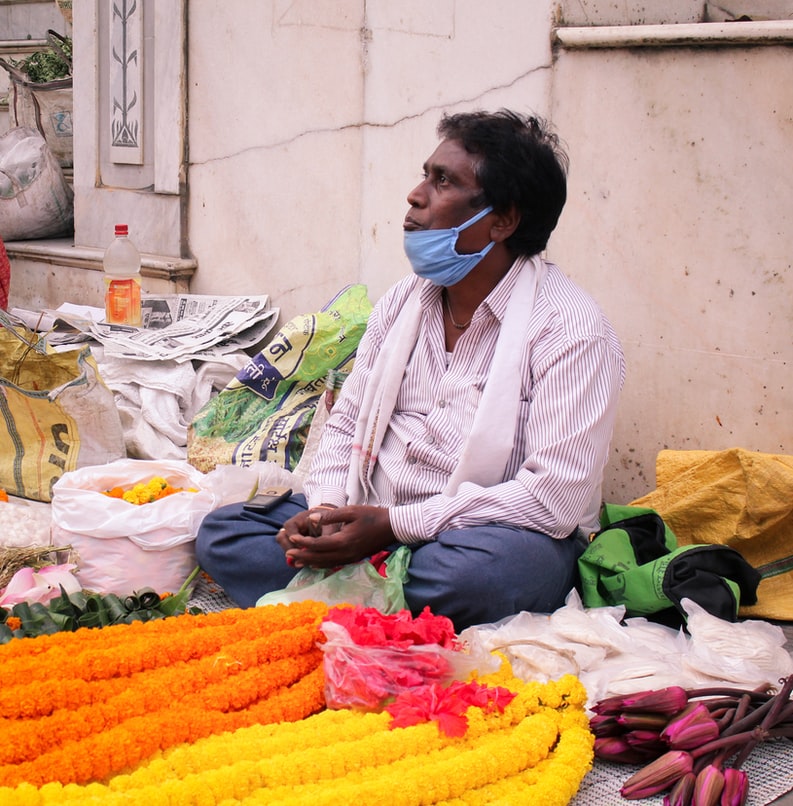
Covid resurgence in India causes concern & Will Bengal’s election outcome turn the tables?
Covid resurgence in India causes concern
Even as the country entered the third phase of vaccinations–with inoculations extended on April 1st to persons over 45–the daily increase in Covid cases hit a new high on March 31. A total of 72,330 cases were reported on that day, the highest daily surge in the past six months. The total number of Covid infections in India now stands at 12.22 million. And the total number of deaths has crossed 162,000.
The resurgence of the virus is of serious concern in the country. What is particularly worrisome is the fact that even as India’s vaccination program is rolled out, the number of deaths caused by the virus has also been rising. The number of deaths in a single day on March 31 was 459. And the seven-day average stood at 319. This marks a reversal of the declining trend in numbers–both for fresh infections of the virus and for deaths caused by it–that prevailed since a peak was reached on September 18, 2020. On that day, the total number of deaths recorded was 1247. Since then the numbers had been declining–in early March the number of deaths fell below triple digits. But since then, the spread of the virus has increased once again.

The spike in cases that began in early March is particularly high in Maharashtra, which is also India’s most prosperous state. Last week in a single day, when a total of 56,000 cases were reported across the country, Maharashtra alone accounted for more than 31,000 of them. With the renewed rise in the spread of the virus, there has been speculation over whether the Indian authorities will go in for another spell of lockdowns across the country. It has been a year since the Indian authorities imposed a countrywide lockdown and while opinion has differed on whether it helped stem Covid’s spread, this time around, at least in some quarters, there is anticipation that another round of lockdowns may be in the offing.
But that is unlikely. Instead of resorting to lockdowns, this time the government may focus more on asking states to step up testing and tracking of infections and speed up the spread of the vaccination program to cover all priority groups quickly. The renewed surge in infections is likely to affect economic activity and investor sentiment, both of which had begun to look up when Covid’s spread had looked as if it would be slowing down.
The quandary the Indian government finds itself in is not enviable. To curb the surge in infections it has to think of adopting stricter measures, which could include more restrictions on mobility. But such measures, as last year’s experience has shown, can adversely impact economic activity. For now, it has opted to intensify the vaccination drive through the month of April and test and track infections on a war-footing.
Will Bengal’s election outcome turn the tables?
In 2011, after ruling West Bengal for 34 years, the Left Front government was ousted by the All-India Trinamool Congress (AITC), which was still an upstart party led by the feisty Mamata Banerjee who was then in her mid-fifties. By the time the AITC dislodged the Left parties in the assembly elections of 2011, the Left Front, a coalition of leftist parties led by the Communist Party of India-Marxist (CPM), had reigned in the state for seven terms. For the first five terms, under the chief ministership of the late Jyoti Basu, and the following two under Buddhadev Bhattacharya.

The Left Front’s inning at the helm of West Bengal’s government may have been long and it may have all but annihilated its political opponents, notably the Congress party, but towards the end of its lengthy tenure, it had failed to bring about material progress in Bengal–mainly in terms of economic progress but also on the social front. Capital and investments continued to leave Bengal as the industry found it difficult to deal with growing and constant labour unrest; and relatively industry unfriendly policies. On the social front, violent clashes, particularly in the rural and semi-urban areas were on the rise as the CPM’s and allies’ cadres clashed with opponents over issues including land and other property rights. Ms. Banerjee and her parties focused on these and other issues, promised a new era of change, and soared to power. The power that she and her party have held onto for two terms.
Now the shoe may be on the other foot. Ten years after being in power, the government led by Ms. Banerjee has had a mixed track record. While Bengal has by and large been able to maintain positive economic growth during the past decade, the rates of growth in the state are still below national averages. Between 2012-13 and 2017-18, the gross state domestic product (GSDP) in Bengal grew at 5.5%, which was lower than the national average during that period of 7.7%. And while unemployment rates in Bengal during 2016-17 (the latest for which data was available) at 4.6% is lower than the national average of 7.1%, a large proportion–nearly a third (compared to fourth, nationally) –is casual employment. And there is no convincing data to show that under AITC jobs have grown in the state.
Non-performance on the economic front maybe one of the things that could affect Ms. Banerjee’s attempt to win a third term but there are others. Growing resentment against what many perceive as appeasement of minorities (nearly 30% of the population is Muslim) by her government; and continuing allegations of corruption against her government officials and party colleagues threaten to develop into a strong anti-incumbency wave against the AITC. Add to that the vigour with which the BJP and its allies in the state have launched a campaign during the ongoing elections and it could seem that the contest may go down to the wire. The elections in the state, which has a population of 91 million, began in March 27and the eight phases will carry on till April 29. The results in early May will tell if 10 years after Ms. Banerjee upturned the tables for the Left Front, those tables could turn for her as well.



